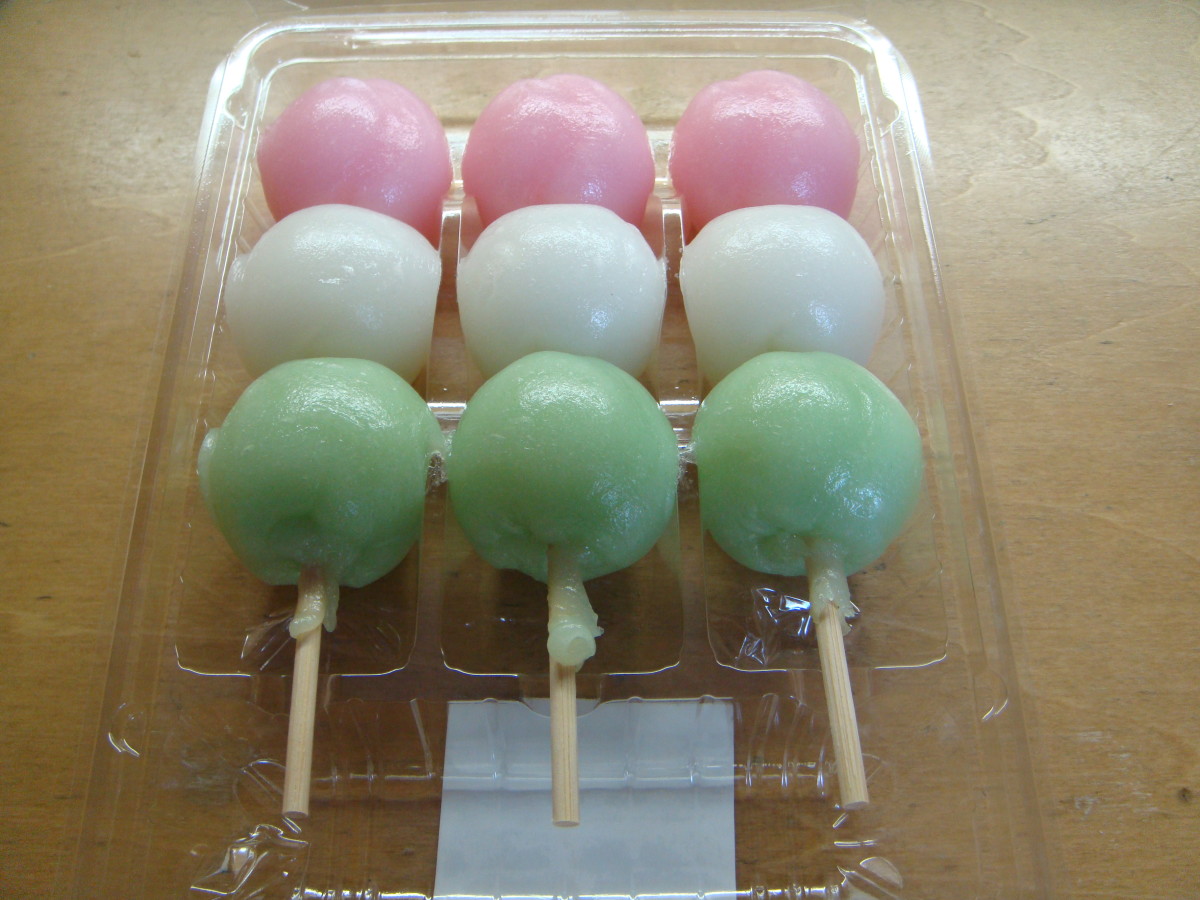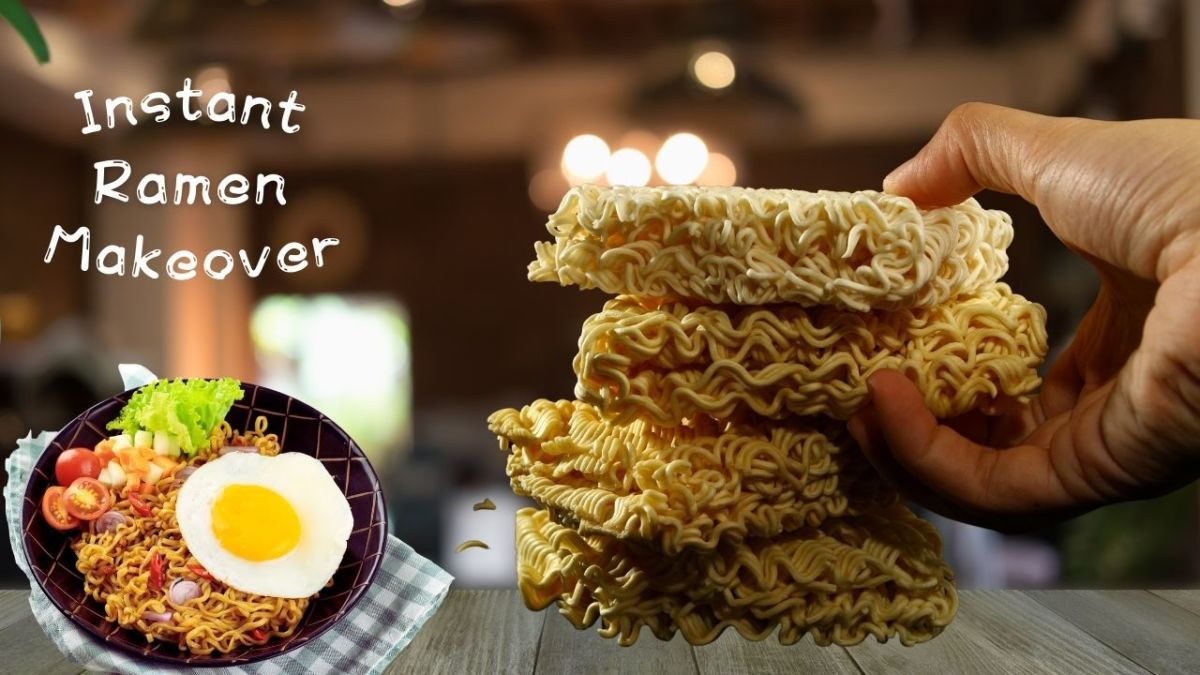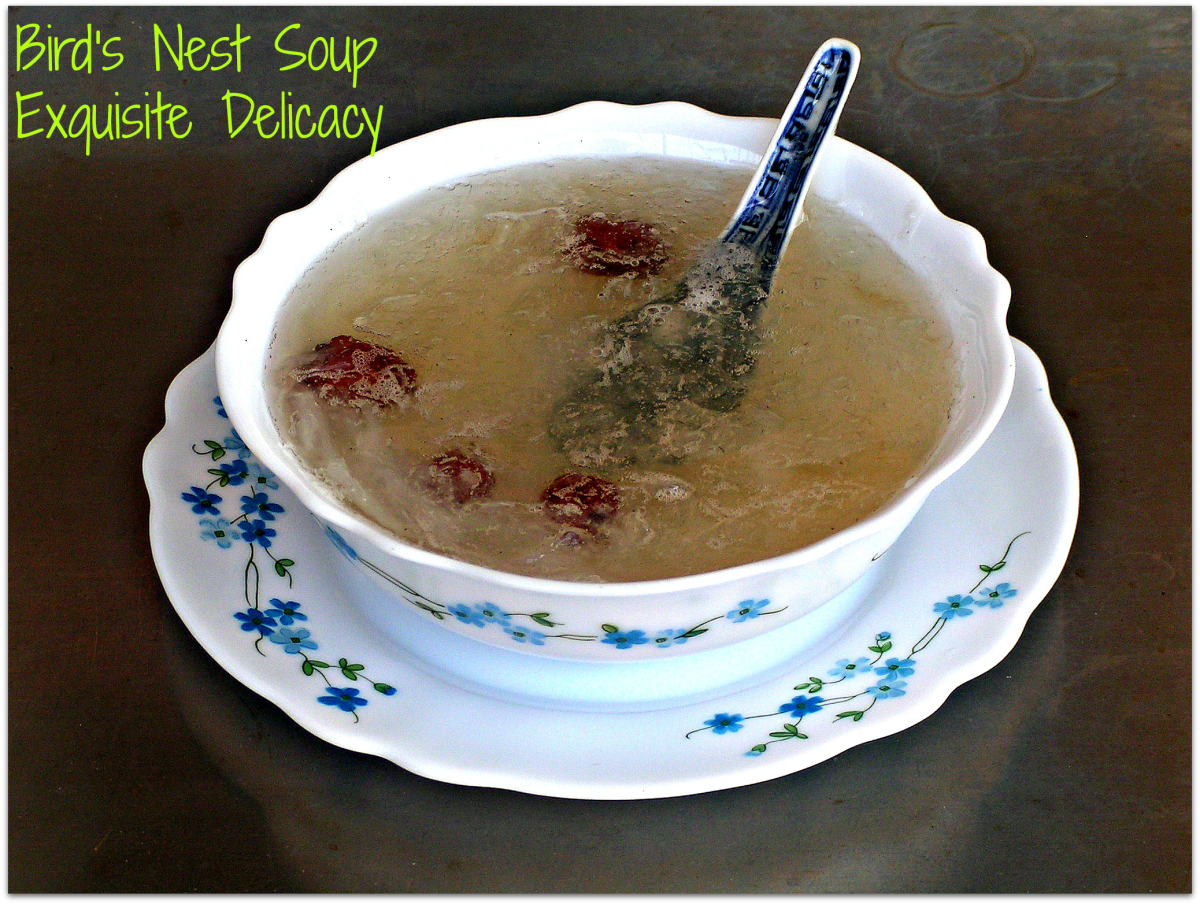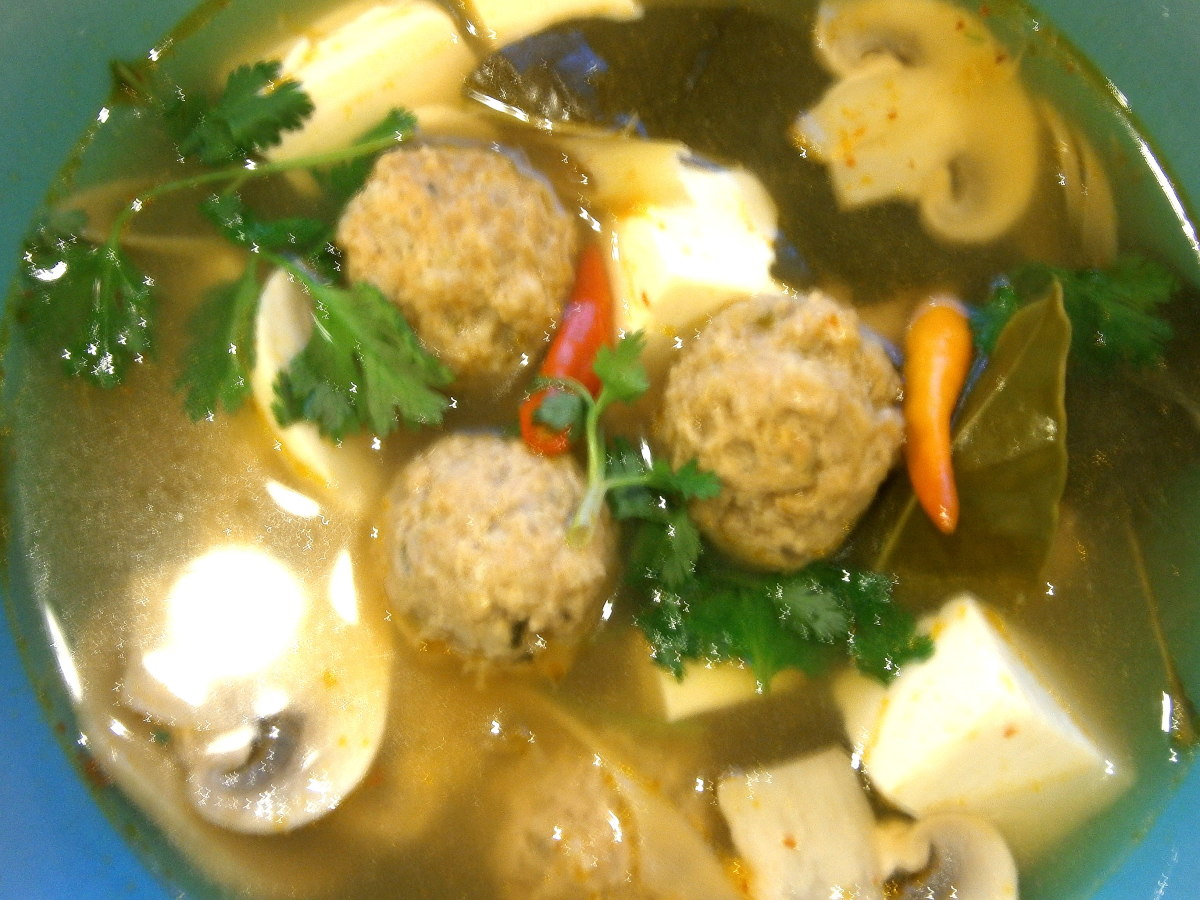Healthier And Great Tasting Ramen Broth
Following A More Professional Route
If you want to make your own ramen, you can easily Google "Traditional Japanese Ramen Noodle Recipes" to gain the recipe. I haven't received permission from the gentleman who wrote the recipe I worked with, but the broth is fairly universal for all ramen, whether homemade or packaged.
You'll also see some preparation notes that deviate from any "Make Ramen From Scratch" recipe basically because I also studied professional ramen chefs from Japan, so there are just slight differences in the steps I'll be presenting.
So Why A Ramen Broth?
As Westerners (I'm born in the West), we have a very obscure vision of ramen noodles, and the commercialization of packed and cup ramen has done nothing but further obscure our views. This recipe is one of many out there for broths that will turn anyone's heads. This broth is a creation of my love of Japanese food and my Chinese heritage. If you like both cultures' foods, this will bring them together.
Now, as mentioned in the subsection, I will NOT be listing the instruction to making your own scratch ramen noodles. This recipe highlights the special broth, and how you should be cooking the ramen (not making it).
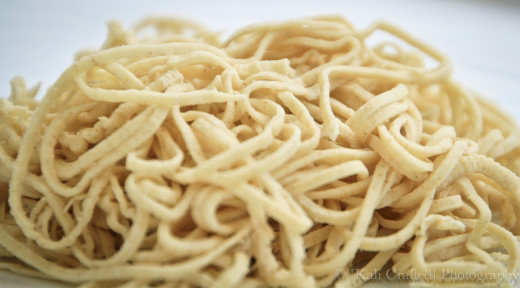
Small Backstory Of Recipe
This recipe is the result of 1 week of constant testing and perfecting, 3 meals a day. I was brought up in a very traditional Chinese family, and I have a great love for my people's food (and Japanese food). Several years ago, I moved to Maine to marry the love of my life, and that, in turn has limited what kind of foods I have access to. This recipe bases the taste of two of my favourite cultures, and also pleases the wallet of those who need/want to spend a little less. It is original and is perfectly balanced for flavour.
I love ramen, and I'm sure a lot of others are, too. But, like others, I'm still very health-conscious. By making your own broth, you make it a heck of a lot healthier. As long as the instructions are followed, it will not only be a healthy broth, but also a delicious soup. This is one that no one would tell you not not to drink.
The Flavor Master

Cooking Time For Broth AND Noodles
Have The Right Tools
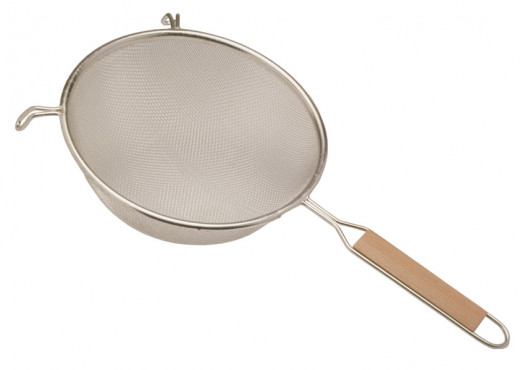
Ingredients/Equipment You'll Need
- 1 Full Stalk Bok Choy, (Pull apart, do not cut)
- 2 Stalks Green Onions, (Diced)
- 1 Onion, (Peeled and Sliced)
- 2 Nickel-sized Slices Ginger Root, (2 cm thick and 1/4 inch diameter)
- Shank Portion Ham, (Pre-cooked)
- 1-Gallon Pot
- 2 Empty Bowls, (Large)
- 1 Bowl Of Water, (1/2 Filled)
- Tray Of Ice, (12 Cubes)
- Handled Strainer, (Large)
Cooking Instructions
- Fill pot with water 3/4 of the way. Put fire on HIGH and boil with lid on. Cut off 2 slices from the Shank Portion Ham, each about the size of your hand.
- Upon boiling, place ingredients into pot and boil for 30 minutes with lid off. (If you're using instant noodles, skip step 3)
- Use these 30 minutes to make your own ramen noodles.
- 28 minutes after adding ingredients for boiling, spend 2 minutes cleaning up, and lining the bowl of water and first empty bowl next to your stove. The second empty bowl should be put on the other side of your stove. Place all ice from ice tray into bowl of water. (If you only have 1 side to your stove, place the 2nd empty bowl near your stove, but separate from the other two.)
- At the 30 minute mark, take all ingredients ONLY out of broth into empty bowl #2. (If you're using instant noodles skip step 6) (If you're making your own noodles, skip step 7)
- Gently lower your raw noodles into the boiling broth and cook for a solid 5 minutes, NOT 4.
- Place your instant ramen (2 packs per person) into the currently boiling broth and press down (using fork or chopsticks). Stir left and right until all noodles separate on their own. (They just have to separate, not look like a bowl of noodles already. Cooking for too long results in soggy, flavourless noodles)
- Turn off the fire and quickly take your noodles out of the broth (preferably in a strainer) and place in the bowl of ice water to cool. (Shake as necessary.) This step shouldn't take more than 10 seconds.
- Lift up noodles and let drip for about 5-10 seconds. (Shake as necessary) Then place noodles in empty bowl #1.
- Separate noodles evenly between your two serving bowls.
- Pour broth into each bowl THROUGH your strainer.
- Garnish with ingredients that were used for the broth.
- Serve immediately.
Boiled Ham
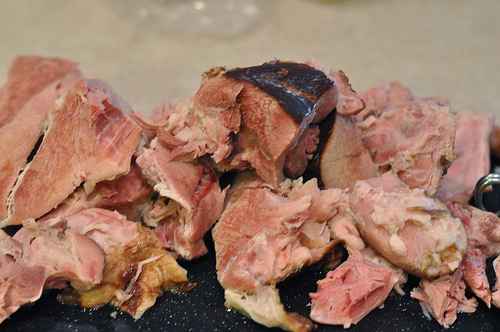
Reasoning Behind Steps
Over the long while that everyone has seen this recipe, the questions are always the same. So I'm taking a little time to explain why certain things are being done.
- The first and most common I've always heard is "Why The Ice Water?". The reason is because when you immediately chill your noodles, it stops cooking itself. This, in turn, keeps the noodles fresh until you serve, and retains its genuine taste and texture. If you don't chill your noodles, the flavour will end up disappearing if you take longer than expected, or not everyone is "ready" to eat yet. With your noodles chilled, you can easily just keep the broth heated in a LOW flame, and merely pour it onto your noodles prior to serving. Also, should any Ham fat stick to the ramen, the cold water makes the fat heavier and removes it completely from the noodles.
- Another common question is "Why Pour Through A Strainer?". This one is more health related. Shank Portion Ham is 1/2 fat. Not entirely lean, but not all flab, either. It is rich in flavour, and that's what you need in your broth. After being boiled, the ham (which is delicious in the ramen) releases the fats and oils into the broth, and the flavor is partially absorbed by cooking the ramen in it. This recipe calls for pouring the broth straight from the pot, so the strainer helps keeps the fat out, making the broth safe to drink after eating.
- "Can I Add Other Seasonings?" The answer is "NO". This recipe's ingredients create a perfect balance between all scopes of tastes, and adding any flavouring will throw off the taste.
- "Why Did You Add An Extra Minute To The Noodle Cooking Time?" I've cooked ramen for many years, and I've found that 4 minutes sometimes yields a few 1/2 cooked noodles, which isn't very healthy to ingest. By cooking exactly 60 more seconds, you remove that possibility, but don't risk overcooking.
Well, those are a few little notes on this recipe. If you have any more questions on this, feel free to comment or send me an e-mail.
For Those Who Tried It
Closing
Thanks for reading this far! I don't make recipes often and consider them good. Coming from a family of head chefs and top restaurant owners, it's hard to please their pallets, and this is only the second that I've ever had approved by everyone. I have many recipes, but if they don't approve, I don't want to give people something that would risk not pleasing them.
When I get time, I'll try posting the pictures of the steps in the near future.


